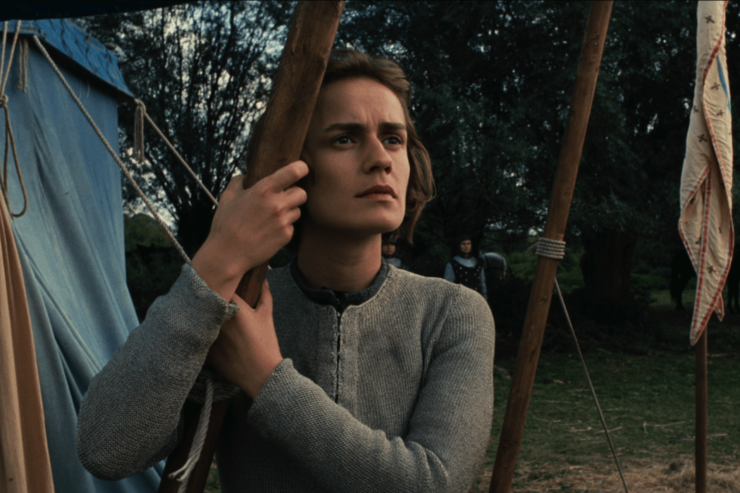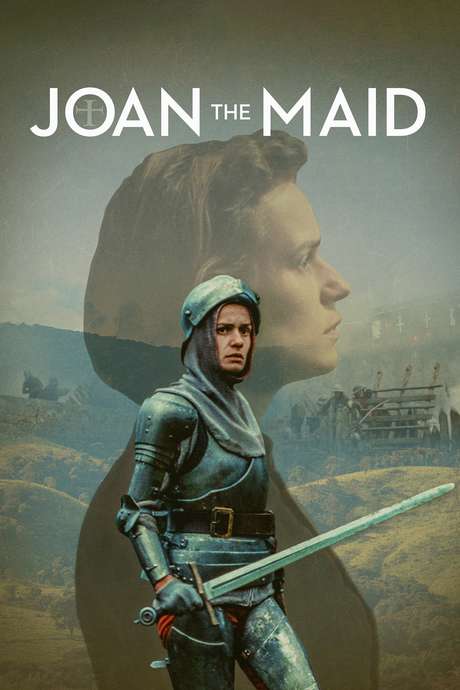
From the January 26, 1996 Chicago Reader. — J.R
Paradoxically yet appropriately, Jacques Rivette’s only “superproduction” to date, his two-part, no-nonsense 1993 opus about Joan of Arc, is his first realistic film since L’amour fou (1968)–and perhaps the only movie that offers a plausible portrait of what the 15th-century teenager who led the French into battle was actually like. Apart from the stylized effect of having various participants in the action narrate the plot while facing the camera, this is a materialist version of a story that offers no miracles, though it does offer a pertinent attentiveness to gender issues (such as the nervousness and sexual braggadocio of the soldiers who sleep beside Joan) and a Joan who’s girlish as well as devout, capable of giggling as well as experiencing pain; when she wins over the dauphin the scene is pointedly kept offscreen, and when she’s interrogated by priests about her faith she could almost be a graduate student defending a dissertation. (Rivette himself plays the priest who blesses her just before she leaves home.) The two features, though comprising a unit, can be seen separately; if I had to see only one I would opt for The Battles (somewhat mislabeled because battle scenes crop up only in the last third), because Rivette is doing things, especially with landscape and period detail (both traversed by inquisitive pans), that he’s never done before. (The Prisons has high points of its own, but its emphasis on Joan’s martyrdom tends to recall Rivette’s The Nun.) As Joan, Sandrine Bonnaire, who’s seldom been better, gives a singular poignance to the line “I know what I must do, but at times I don’t know how.” For his part, Rivette seems to know what he’s doing every step of the way. Film Center, Art Institute, Columbus Drive at Jackson, Friday, January 26, The Battles: 6:00, and Saturday, January 27, The Prisons: 2:30, 443-3737.

